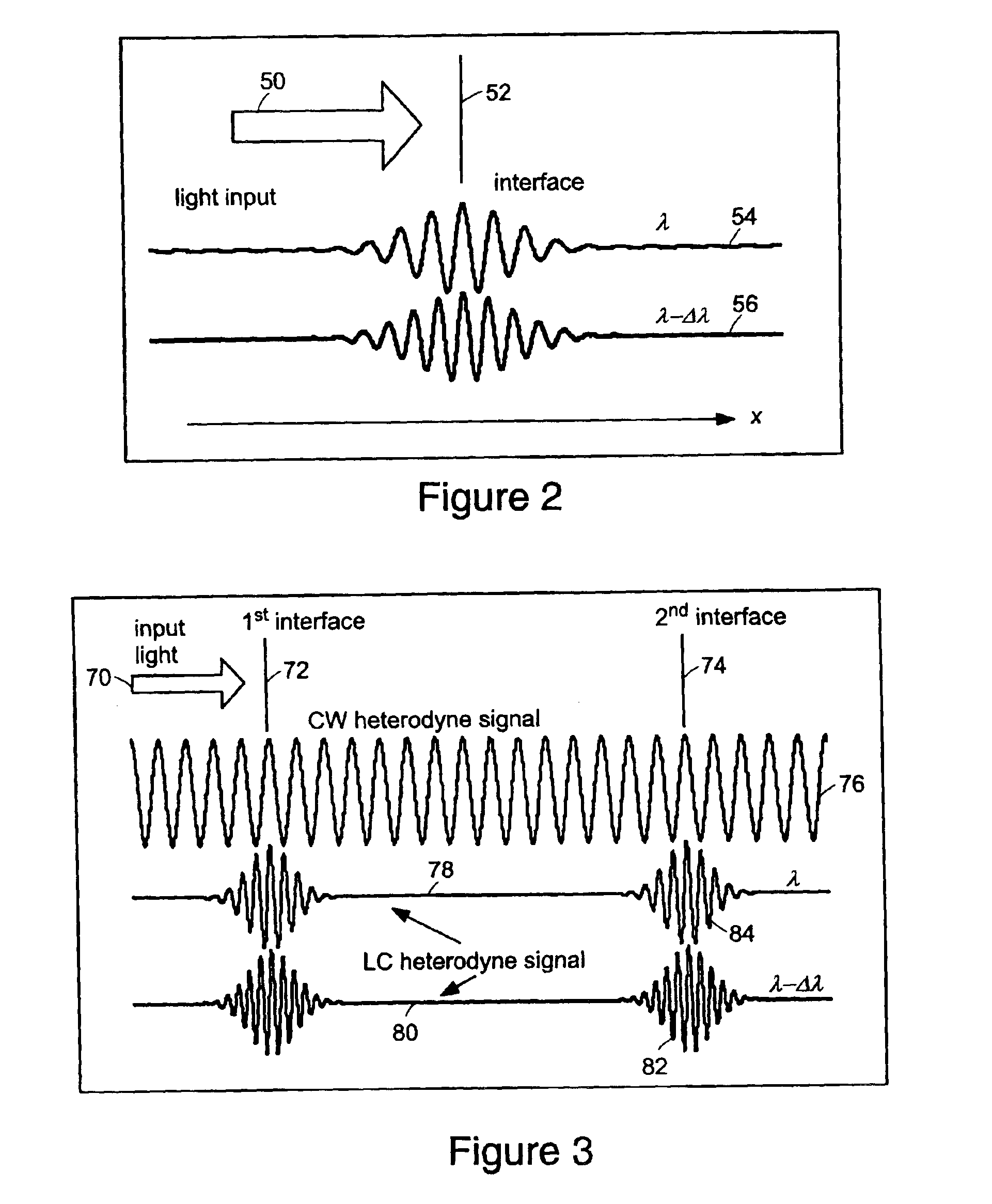System and method for measuring optical distance
- Summary
- Abstract
- Description
- Claims
- Application Information
AI Technical Summary
Benefits of technology
Problems solved by technology
Method used
Image
Examples
Embodiment Construction
[0018]The present invention is directed at phase crossing based systems and methods for measuring optical distances that overcome the integer or 2π ambiguity problem by introducing a dispersion imbalance in an interferometer. A preferred embodiment of the method is able to measure the relative height difference of two adjacent points on a surface with precision. Further, the refractive index of a sample can be found to an accuracy that is limited only by the precision with which the physical thickness of the sample can be experimentally measured.
[0019]The substitution of one of the low coherence light sources with a continuous wave (CW) light source in the harmonic phase based interferometry (HPI), allows the use of the associated CW heterodyne signal as a form of optical ruler by which the low coherence heterodyne signal can be measured. The low coherence light source provides a spectral bandwidth, for example, greater than 5 nm for 1 micron wavelength. One of the benefits of using...
PUM
 Login to View More
Login to View More Abstract
Description
Claims
Application Information
 Login to View More
Login to View More - R&D
- Intellectual Property
- Life Sciences
- Materials
- Tech Scout
- Unparalleled Data Quality
- Higher Quality Content
- 60% Fewer Hallucinations
Browse by: Latest US Patents, China's latest patents, Technical Efficacy Thesaurus, Application Domain, Technology Topic, Popular Technical Reports.
© 2025 PatSnap. All rights reserved.Legal|Privacy policy|Modern Slavery Act Transparency Statement|Sitemap|About US| Contact US: help@patsnap.com



